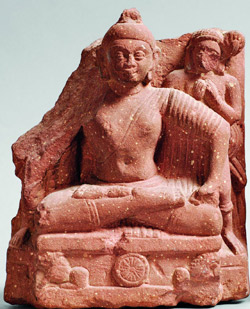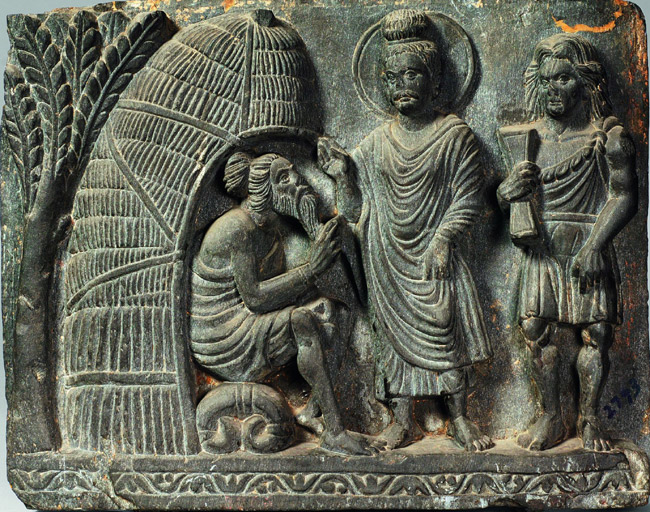This international exhibition presents 200 exceptional Greco-Buddhist works of art, typical of the Gandhara, a former kingdom with a Hellenistic influence which spanned the North West provinces of today’s Pakistan. This civilisation contemporaneous with the Romans in the west and the Chinese Hans in the east, peaked between the 1st and 3rd century AD, in the era of the successors of Alexander the Great and the Kushan Empire.
The influence of Buddhism
A land of encounters, a land of Buddhism, invasions and exchanges, but also a land of ancient culture and diversities, Gandhara witnessed the birth and development of a brilliant civilisation combining Greek influences, resulting from the conquests of Alexander the Great, and Persian and Indian inspirations. Under the Kushan dynasty, Gandharan art thrived through Buddhism. The first image of Buddha appeared in the region around Peshawar, inspired by foreign influences, notably Hellenistic and Roman. Steles, statues, low reliefs are a blend of classical Greek art and Indian art. The fusion of genres and styles gave birth to a very particular, incredibly coherent and glorious form of art: Kipling’s novel Kim opens in the Lahore museum, describing the amazement of an old Tibetan monk contemplating a number of low reliefs evoking Buddha’s poems and the strange art of Gandhara.
Low reliefs, stucco and statuettes
In this exhibition, statuettes or statues of Buddha and revered deities (bodhisattva, etc.), low reliefs of temples and stupas, will appear alongside terracotta and stucco items from monasteries or palaces. These works of art come notably from the Taxila archaeological site, 40 km from Pakistan’s capital Islamabad which, due to its geographical location, was a melting pot of populations and cultures. Taxila is currently host to the remains of three successive cities and numerous monastic sites attest to the refinement of an era when the city was at its pinnacle. The Gandhara civilisation progressively disappeared following the Huns’ invasions, leaving behind an art form which would durably influence the countries of Upper Asia (Central Asia, China, Korea and Japan).
 Seated Buddha, Mathura style. Pakistan, Taxila, Bhari Dheri Pink sandstone, 19 x 16 x 6 cm, Taxila Museum N° 9080, Bdi.-39 / 1 © all rights reserved
After a presentation in Bonn in 2008/2009 and Berlin in 2009, the exhibition completed its journey in early January in Zurich. The Paris stage focuses on the chronology of the influences. A multi-faceted art, Gandharan art bridges the gap between continents, between western and eastern cultures, offering a multiplicity of artistic forms which invite us to discover a world where beauty and humanity prevail. This exhibition is the result of a collaboration initiated between the Guimet Museum and the National Art and Exhibition Centre of the Federal Republic of Germany, Bonn. The European organisers wish to present not just an exhibition but also the hope that Pakistan can soon be the land of encounters that it once was.
PUBLICATIONS:
Album of the exhibition: Pakistan A land of encounters – 1st-6th centuries. Gandharan arts, edited by Pierre Cambon 22 x 28 cm, 160 p., 150 colour illustrations, Rmn / Guimet Museum, €35
Special issue of Connaissance des arts, €8. Special issue of Art Absolument, €10
To see more illustrations, click on VERSION FRANCAISE at the top of this page
| 










